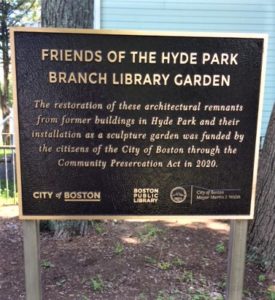 In 2019, The Friends of the Hyde Park Library received Community Preservation Funds (CPA) from the city of Boston to transform an unused section of the library’s lawn into an historic garden incorporating artifacts of local significance. HPHG-brochure
In 2019, The Friends of the Hyde Park Library received Community Preservation Funds (CPA) from the city of Boston to transform an unused section of the library’s lawn into an historic garden incorporating artifacts of local significance. HPHG-brochure
For many years library patrons had asked about the two figures and the Corrigan stone lying in the mulch on the Everett Street side of the library.
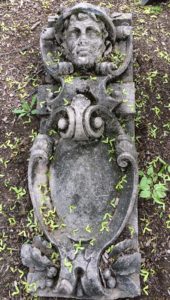
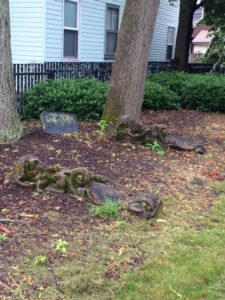
Most thought the objects to be gravestones. In fact, they are figures of Mercury, the god of transportation and commerce, from the demolished railroad station. The figures were donated to the library by Edward Gonski who in 1974 saved them after demolition. EdRemembers
The Hyde Park Historical Society (HPHS) wasn’t sure if the figures were worth saving, so they put the question to Jonathan L. Fairbanks, the Curator of the American Decorative Arts and Sculpture Department at the Museum of Fine Arts Boston. His response was ‘Yes’. MFALetter_ 1976
The figures were removed in 2019 by Daedalus Inc., monuments, sculptures and fine arts conservators from Watertown, MA. This firm previously repaired, cleaned and remounted the Civil War monument in Fairview Cemetery.
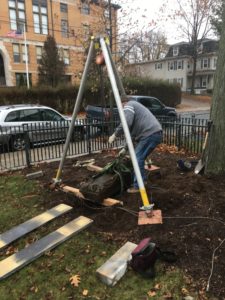
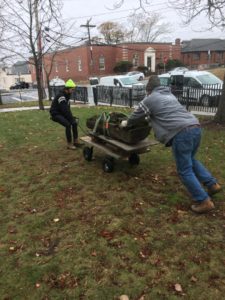
Brief History of the 1914 Station
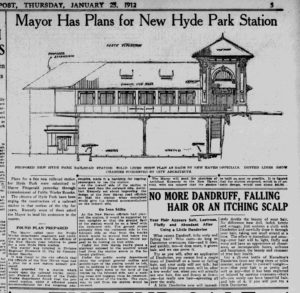 After years of negotiation, design change, economic worries and the town’s annexation to Boston, the New York New Haven & Hartford Railroad Company (NYNH&H) Hyde Park station opened on April 15,1914. HP Businessmen -1912 , Contractor- 1912 HPGT- 4-15-1914 station opened
After years of negotiation, design change, economic worries and the town’s annexation to Boston, the New York New Haven & Hartford Railroad Company (NYNH&H) Hyde Park station opened on April 15,1914. HP Businessmen -1912 , Contractor- 1912 HPGT- 4-15-1914 station opened
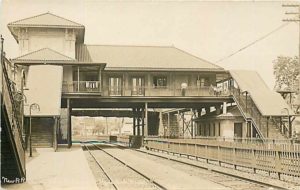
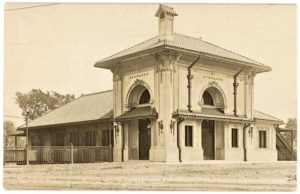
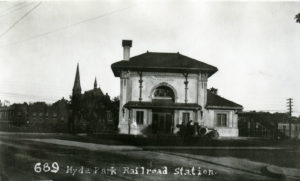
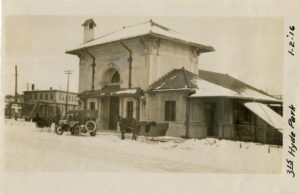
The entrance and ticket office was on Business Street and the main waiting area extended over the tracks so approaching trains could be seen from bother directions. There was a smaller waiting room on the inbound side.
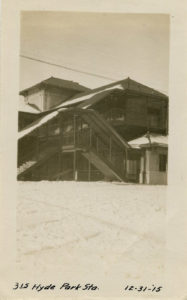
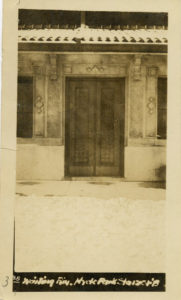
All 1915-1916 photographs in this article are from the Archives & Special Collection, University of Connecticut Library.
We’re unable to confirm the station’s architect even with assistance from New England railroad historian Robert Belletzkie and from the NYNH&H archivist at the University of Connecticut. The belief is that it is a redesign, by a railroad company engineer, of a Cass Gilbert station. 1911GilbertMention. Anthony Sammarco and an expert at the Cass Gilbert Society concurred. Note the similarity of the HP station with Gilbert’s 1908 Westchester Avenue station in the Bronx, New York.
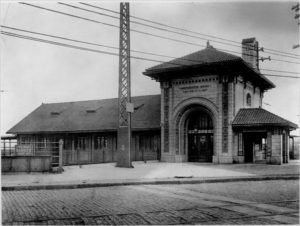
Railroad services declined in the twentieth century with the expanded use of airplanes, trucking routes and cars. Railroad companies reduced their losses by discontinuing routes and by doing minimal maintenance. Vandalism at the station increased. At one time the HP station was considered the pinnacle of elegance and functionality, only to be abandoned and became an eyesore.
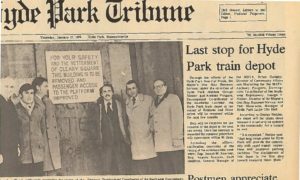
Since 1973, the Massachusetts Bay Transit Authority owned the commuter station area. The depot was demolished on July 9,1974. HPTribune7_11_1974
The only remaining structures are iron posts at the top of the stairways on River Street.
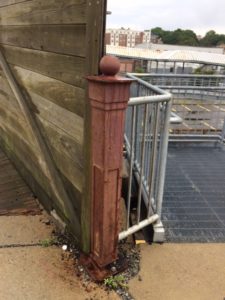
Hyde Park’s Clearly Square Station 2019
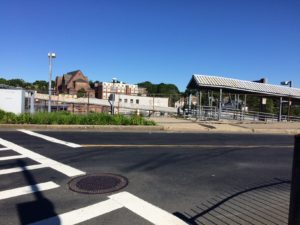
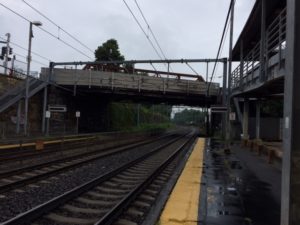
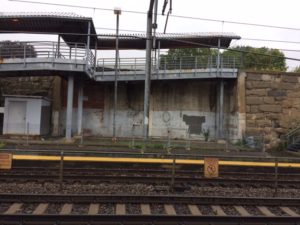
Mercury at the Hyde Park Library- 2020
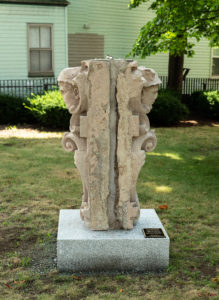
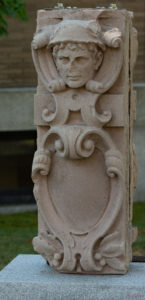
The Corrigan Stone
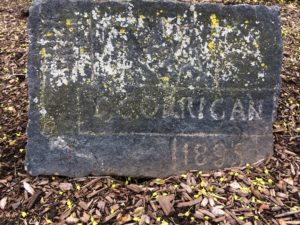 In 2006, this piece of granite was donated to the Hyde Park Historical Society by Virginia Foley who was given to hold for safekeeping by Atty William Slattery, Sr. Both attended St. Catherine’s School where the Corrigan stone was part of the foundation.
In 2006, this piece of granite was donated to the Hyde Park Historical Society by Virginia Foley who was given to hold for safekeeping by Atty William Slattery, Sr. Both attended St. Catherine’s School where the Corrigan stone was part of the foundation.
In 1895, a satellite school for the Most Precious Blood Parish was built on the corner of Washington Street and Foster Street which in 1930 became ChittickRd- 1930.
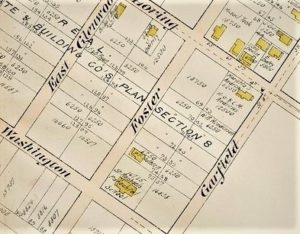
The school, taught by the Sisters of Charity of Nazareth, had four rooms, and five or six grades. Most students transferred to the central school on Maple Street and graduated after the eighth grade. 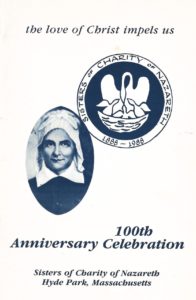 In 1921, after the retirement of Mother Catherine Spaulding, the name of the school in Corriganville was renamed, St. Catherine’s.
In 1921, after the retirement of Mother Catherine Spaulding, the name of the school in Corriganville was renamed, St. Catherine’s.
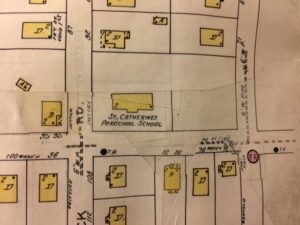
Read more about the 1981 centennial celebrations for Most Precious Blood Parish (MPB), and for the Sisters of Charity of Nazareth in material in the local history room at the HP library.
In 1954 the school was transferred to the St. Pius X parish in Milton. The archivist at the Archdiocese of Boston was helpful with the next piece of the puzzle. A memorandum from June 10, 1966 states “ the old school will be torn down ….and the land which consists of approximately 33,000 square feet will be sold.” The demolition was completed on Sept 16, 1966 by Duane & Company, and all salvage material became their property. The land was sold to Stephen J. Joyce of Milton who planned to build 5 homes on the property. Atty Slattery likely took the Corrigan stone from the demolition site.
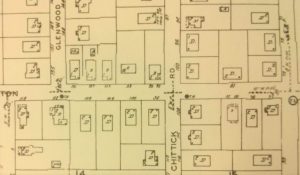
There was another satellite school in Readville that transferred to St. Anne’s Parish in 1921.
Thomas Corrigan (1845-1902) and his brother John (1836-1891) came to Hyde Park from Ireland in the late 1860’s. It is recorded in the 1st HP Annual Report that John’s resident tax for 1868 was $5.20. They worked as laborers and prospered which each owning a contracting /masonry business.
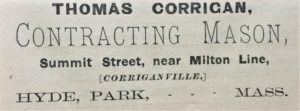
Thomas Corrigan built hundreds of foundations in the area. His measurements and calculations for the masonry jobs were included in estate material given to the HP Historical Society.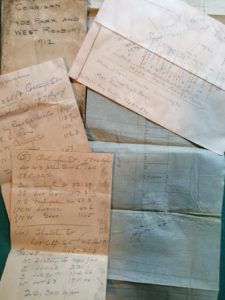
Thomas Corrigan owned property in many sections of HP.
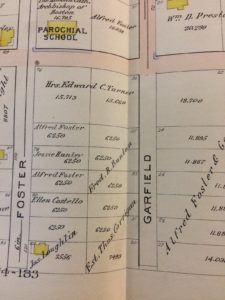
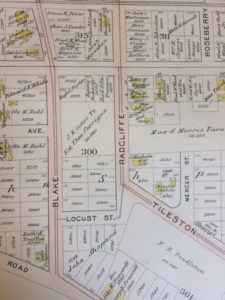
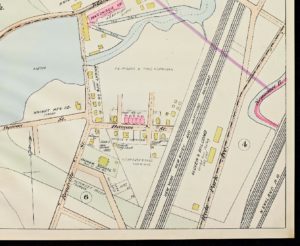
The neighborhood east of Water Street, now Truman Highway from about Dana Ave to Walcott Road was nicknamed Corriganville .
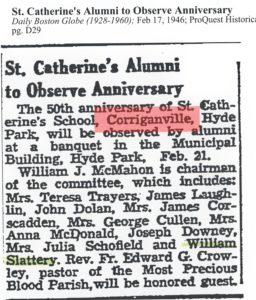 Corriganville Improvment Assoc 1925, CorriganvillTeam-1938
Corriganville Improvment Assoc 1925, CorriganvillTeam-1938
Thomas Corrigan was a generous donor to the Catholic church throughout his life and also after his death . page 1 TC will, page2 TC will
His obituary mentioned that he loved the United States and this area. He represented this feeling on the foundation stone, with a folk art image of a flag and a maple tree. Thomas Corrigan is buried in Mount Calvary cemetery, and John’s family is buried at Fairview Cemetery.
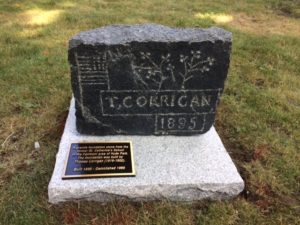
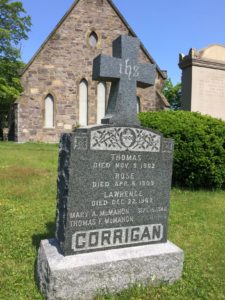
Thomas’s nephew, Thomas H. Corrigan (1867-1923) also a contracting mason, kept up the family tradition of supporting the church and there’s a small plaque near the church steps with his name.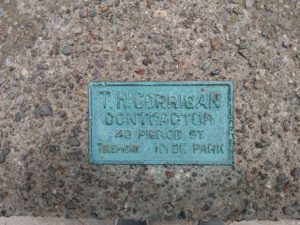
If other outdoor artifacts of significance to Hyde Park are brought to the Historical Society’s attention, they will be considered for placement in the library’s historic garden. In time, native plants will also be added.
